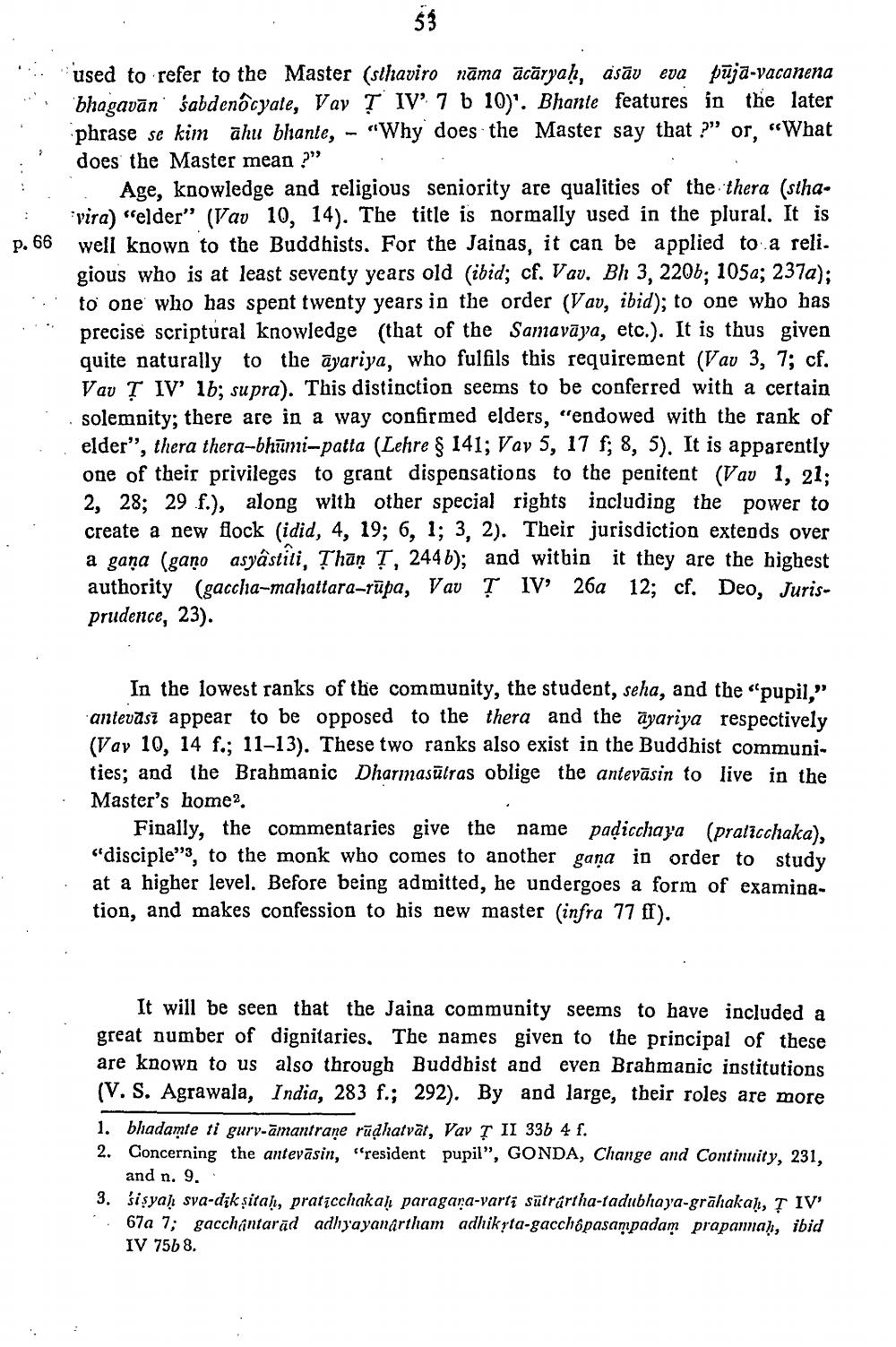________________
used to refer to the Master (sthaviro nāma ācāryaḥ, asāv eva pūja-vacanena ni bhagavāni śabdenôcyate, Vay T IV 7 6 10)'. Bhante features in the later
phrase se kim ahu bhante, - "Why does the Master say that ?" or, “What does the Master mean?"
Age, knowledge and religious seniority are qualities of the thera (stha. : vira) "elder" (Vav 10, 14). The title is normally used in the plural. It is p. 66 well known to the Buddhists. For the Jainas, it can be applied to a reli.
gious who is at least seventy years old (ibid; cf. Vav. Bh 3, 2206; 105a; 237a); to one who has spent twenty years in the order (Vav, ibid); to one who has precise scriptural knowledge (that of the Samavāya, etc.). It is thus given quite naturally to the āyariya, who fulfils this requirement (Vav 3, 7; cf. Vav T IV 1b; supra). This distinction seems to be conferred with a certain solemnity; there are in a way confirmed elders, "endowed with the rank of elder”, thera thera-bhūmi-patta (Lehre § 141; Vay 5, 17 f; 8, 5). It is apparently one of their privileges to grant dispensations to the penitent (Vav 1, 21; 2, 28; 29 f.), along with other special rights including the power to create a new flock (idid, 4, 19; 6, 1; 3, 2). Their jurisdiction extends over a gana (gano asyâ stili, Than Ţ, 244b); and within it they are the highest authority (gacchia-mahattara-rūpa, Vav T IV 26a 12; cf. Deo, Jurisprudence, 23).
In the lowest ranks of the community, the student, seha, and the "pupil.” antevāsī appear to be opposed to the thera and the āyariya respectively (Vay 10, 14 f.; 11-13). These two ranks also exist in the Buddhist communities; and the Brahmanic Dharmasülras oblige the antevāsin to live in the Master's home2.
Finally, the commentaries give the name padicchaya (pralicchaka), "disciple"3, to the monk who comes to another gana in order to study at a higher level. Before being admitted, he undergoes a form of examination, and makes confession to his new master (infra 77 fl).
It will be seen that the Jaina community seems to have included a great number of dignitaries. The names given to the principal of these are known to us also through Buddhist and even Brahmanic institutions (V. S. Agrawala, India, 283 f.; 292). By and large, their roles are more 1. bhadamte ti gurv-āmantrane rūdhatvät, Vav Ţ II 336 4 f. 2. Concerning the antevāsin, "resident pupil", GONDA, Change and Continuity, 231,
and n. 9. 3. śisyal sva-dik sitan, praticchakah paragama-varti sütrúrtha-tadubhaya-grāhakan, ? IV
67a 7; gacchantarad adhyayanartham adhikyta-gacchopasampadam prapama), ibid IV 75b 8.




